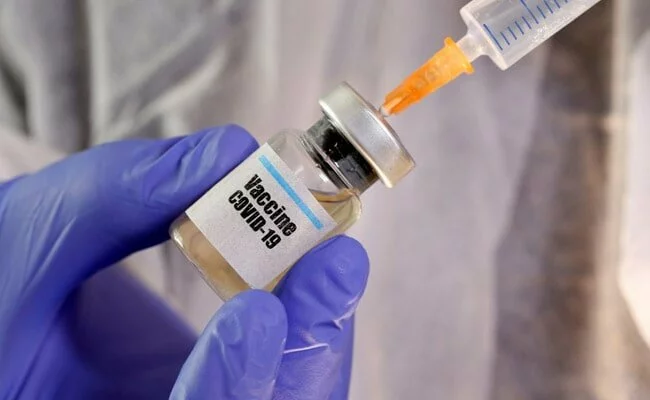Moderna said it would enter the final phase of human trials for its COVID-19 vaccine. (Representative)
Washington, United States:
US biotech firm Moderna announced Tuesday that it will enter the final phase of human trials for its COVID-19 vaccine on July 27, after the first promising results were published in an influential journal.
The phase 3 trial will recruit 30,000 participants in the United States, half of whom will receive the vaccine at 100 microgram doses and the other half of whom will receive a placebo.
It is designed to show whether the vaccine is safe and can prevent infection with the SARS-CoV-2 virus, or – if people are still infected – if it can prevent the infection from progressing to symptoms.
If they experience symptoms, the vaccine can still be considered successful if it stops severe cases of COVID-19.
The study is expected to continue until October 27, 2022, according to its page on clinicaltrials.gov.
The announcement came after the New England Journal of Medicine released results of the first phase of the Moderna vaccine trial on Tuesday, which showed that the first 45 participants had all developed antibodies to the virus.
Moderna, currently in the middle stage, is considered to be in a leading position in the global race to find a vaccine against the coronavirus, which has infected more than 13.2 million people and killed 570,000.
The Chinese SinoVac is also in phase 2.
Russian news agency TASS announced on Sunday that Russian researchers have completed clinical trials on a vaccine, although they have not shared their data.
Scientists warn that the first vaccines on the market may not be the most effective or the safest.
– “Encouraging” results –
Moderna previously released “interim results” of the early stages of its trial, called Phase 1, in a press release on its website in May.
They revealed that the vaccine had generated immune responses in eight patients, a result called “encouraging” by Anthony Fauci, director of the United States National Institute of Allergies and Infectious Diseases, which is co-developing the vaccine.
But some members of the scientific community have said they will reserve judgment until they see the full results in a peer-reviewed form.
According to the new document, 45 participants were divided into three groups of 15 to test doses of 25 micrograms, 100 micrograms and 250 micrograms.
They received a second dose of the same amount 28 days later.
After the first cycle, antibody levels were found to be higher with higher doses.
After the second round, participants had higher antibody levels than most patients who had COVID-19 and continued to generate their own antibodies.
More than half of the participants experienced mild or moderate side effects, which is considered normal.
Side effects included fatigue, chills, headache, body aches, and pain at the injection site.
Three participants did not receive their second dose.
They included one who developed a rash on both legs and two who missed their window because they had symptoms of COVID-19, but their tests then returned negative.
“The results look pretty good and fairly consistent,” David Lo, professor of biomedical science at the University of California Riverside, told AFP.
But he warned that more work was needed to assess the safety of the vaccine – including making sure it didn’t backfire by possibly making the immune system “tolerant” to the real virus.
Amesh Adalja, an infectious disease specialist at Johns Hopkins University, added that it was encouraging that participants had developed high levels of an advanced class of antibodies.
He added, however, “You have to be very limited in how much you can extrapolate from a phase one clinical trial because you want to see how it works when a person is exposed to the real virus.”
The Moderna vaccine belongs to a new class of vaccines which uses genetic material – in the form of RNA – to encode the information necessary for the growth of the virus’s peak protein inside the human body, in order to trigger a response. immune.
Peak protein is part of the virus it uses to invade human cells, but the protein itself is relatively harmless.
The advantage of this technology is that it bypasses the need to manufacture viral proteins in the laboratory, thereby reducing the months of normalization process and helping to speed up mass production.
No vaccine based on this platform has previously received regulatory approval.









